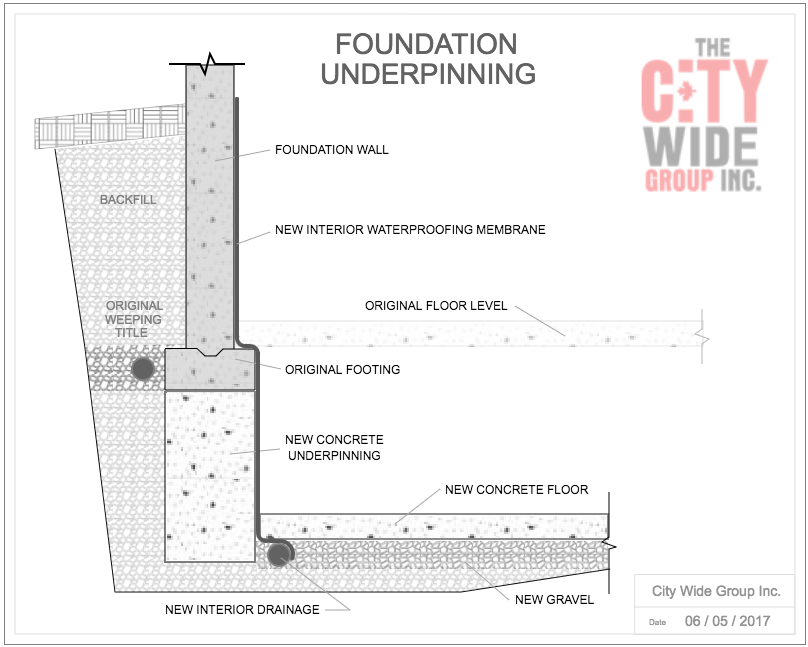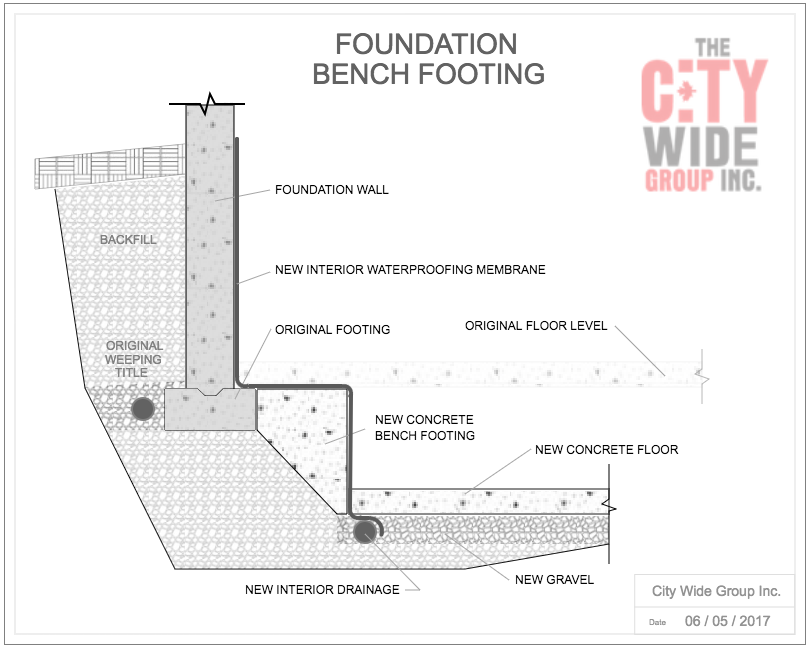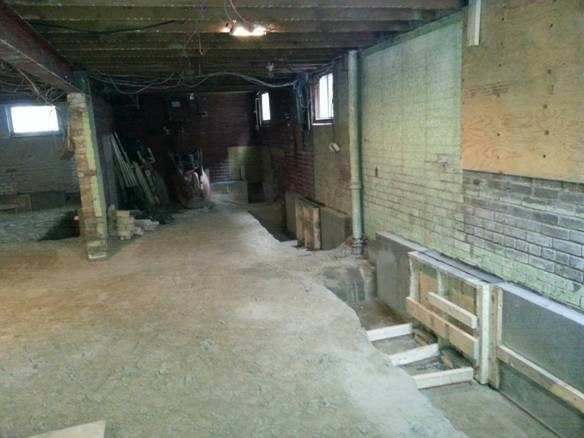You and your family need more space but no one wants to move from your comfortable home or neighbourhood! You could build an addition but there goes the fantastic garden or back yard space and there are zoning issues. You could build up but that has serious budgetary considerations. Another way to increase the amount of living space in your home is to make better use of the existing basement area. Your basement has a low ceiling and could only house elves? Not so if you undertake to underpin or lower your basement floor. A lot will depend on the budget you have for your renovations and just how much space you want to add to your home. Looking at expanding your home down is worth considering.
Basements, especially in older homes, are where you find the electrical, plumbing, and other systems running along the ceilings. The laundry room might be in the basement and there’s probably a crawl space but it really isn’t a place in which anyone would want to spend serious time. Often the basement is considered the last frontier – when you don’t know where to put something, it goes in the basement resulting in a lot of stuff in boxes littering up the floor space.
Basements can however, house extra sleeping space, recreational areas, offices or even potential rental space. First they have to be comfortable, dry, and bright places. You can undertake creating that kind of space with the creative designers of the City Wide Group. What are the considerations to take into account?
How to Lower a Basement
In many homes, the basement was intended only as part of the skeletal structure on which to build. Not tall enough to allow you to comfortably walk about, some are mainly crawl spaces to give you access to your home’s apparatuses. When you need more ceiling space and want to expand the area, you need to change the structure of the foundation. There are two methods of lowering the floor of your basement. One is called Underpinning and the other Benching. Both involve structural changes to your foundation walls and footings that will enable you to have more useable space and allow you to have the basement waterproofed. Both are worth study depending on the scope of work you wish to have done in your basement, the amount of new living space you want to create, and your budget. There are pros and cons to any project.
Foundation Underpinning
Underpinning enables you to create space while at the same time strengthening the foundations of your home. This project includes having any cracks in your foundation rectified. You can undertake all sorts of upgrades to your plumbing, electrical and insulation systems to modernize and bring up to the Building Code standards. You can install or upgrade your waterproofing system so that you maintain the dry comfort of your new space. Does your home need HVAC improvements?
The process of underpinning involves digging a series of holes below your existing foundation footing and filling them in sequence to strengthen and lower the footing while maintaining the structural soundness of your walls. Eventually the soil left on the inside of the foundation can be dug out to allow for the rest of your renovations. It is a slow process which must be undertaken carefully and with experienced engineering experts. You need to allow for sufficient time for this kind of project. As with any project that needs a lot of time, you have to consider your budget requirements.
The results can include spacious place for you to finish to your requirements. Have you always dreamed of having a games room or entertainment centre? Do you want to give your teenagers their own space? Knowing that you now have a place where you can have an office, dry storage area, or a complete apartment to rent out adds value to your home.

Foundation Benching
Benching is a less costly and quicker way to create more space in your basement. It involves digging down to the depth you wish your new foundation floor to be and creating new walls to extend from the new depth up to the existing. This new wall has to be reinforced and has a cap – which creates a bench-like structure around your new foundation floor. You can use the new wall to create bookcases, and shelves or add cupboards for storage. This method is good if what you need to do is create useable space to free up space elsewhere in your home. It does add living space but not quite as much as the underpinning method.
However, benching may be the solution depending on the soil conditions around your home, the nearness of your neighbour’s home, the sewage system your home uses, your budget or the schedule in which you want to have the work completed.

So, underpinning or bench footing? Both add space. Both strengthen your foundation. Both make your basement a more flexible space for renovations. Underpinning makes more living space which takes more time and money. Benching adds less space but is quicker and less costly.
Your home is the place your family comes together to enjoy time together. Creating more space can make that time more comfortable and result in added long-term value to your property. If you want to talk about the various options available to lower your basement to enlarge your home, call the City Wide Group for a free estimate. Our experts will guide you through all the factors to be considered including your existing foundation’s condition, short and long-term plans, and budget. You can be sure our 50+ years of experience will be brought into play when we transform your dark basement into the space of your dreams.










